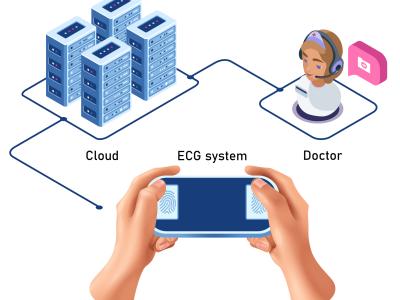DeepRTSNet: Deep Robust Two-Stage Network for Practical Wearable ECG Recorders Denoising under Severe Noise Corruption and Various Physiologies

- Citation Author(s):
-
Jalil MazloumMohammad Ali AkbarzadehMahdi OroojiNader MokariHalim Yanikomeroglu
- Submitted by:
- Amir Mohammadi Sarab
- Last updated:
- DOI:
- 10.21227/tzgg-fw33
 377 views
377 views
- Categories:
Abstract
In this paper, we develop an internet of medical things (IoMT)-based electrocardiogram(ECG) recorder for monitoring heart conditions in practical cases. To remove noise from signals recorded by these non-clinical devices, we propose a cloud-based denoising approach that utilizes deep neural network techniques in the time-frequency domain through the two stages. Accordingly, we exploit the fractional Stockwell transform (FrST) to transfer the ECG signal into the time-frequency domain and apply the deep robust two-stage network (DeepRTSNet) for the noise cancellation. The various heart physiologies and noise levels in different amplitude and frequencies are needed to be robust against wide-range noises in actual conditions. We utilize the MIT-BIH Apnea-ECG database(APNEA-ECG) and the different noises consisting of muscle artifacts (MA), baseline wander (BW),and electrode motion (EM) from the MIT-BIH Noise Stress Test Database (NSTDB) and random noise, are added to the signals. The main focus of the noise generation part is the fast Fourier transformation(FFT) of the simulated noisy signal, and the practical noisy signal has a maximum cross-correlation. Based on the results, Deep-RTS-Net outperforms prior learning-based methods and non-learning approaches in terms of signal-to-noise ratio (SNR), root mean square error (RMSE), and percent root mean square difference (PRD).
Instructions:
The DeepRTSNet architecture presented in this paper uses deep learning to denoise ECG signals. It can identify the signal from the noise by learning a sparse distribution of data in the time-frequency domain.Empirical results reveal that DeepRTSNet was outstandingly robust against various noises similar to ECG waves (P, QRS, and T) and adaptively dealt with different heart physiologies. Furthermore, evaluation proved that the DeepRTSNet achieved a higher output SNR and gained lower RMSE and PRD compared to DeepCEDNet, FCN-based DAE, Kalman filter bank, FIR, and IIR filters. For Future works, a more efficient DL-based approach in terms of computational complexity and network input data format, a higher-resolution time-frequency transform for better noise separation, new DL models such as self-supervised learning, and one-stage iterative denoising architecture instead of two-stage will be taken into account in order to enhance the DeepRTSNet performance and efficiency.







